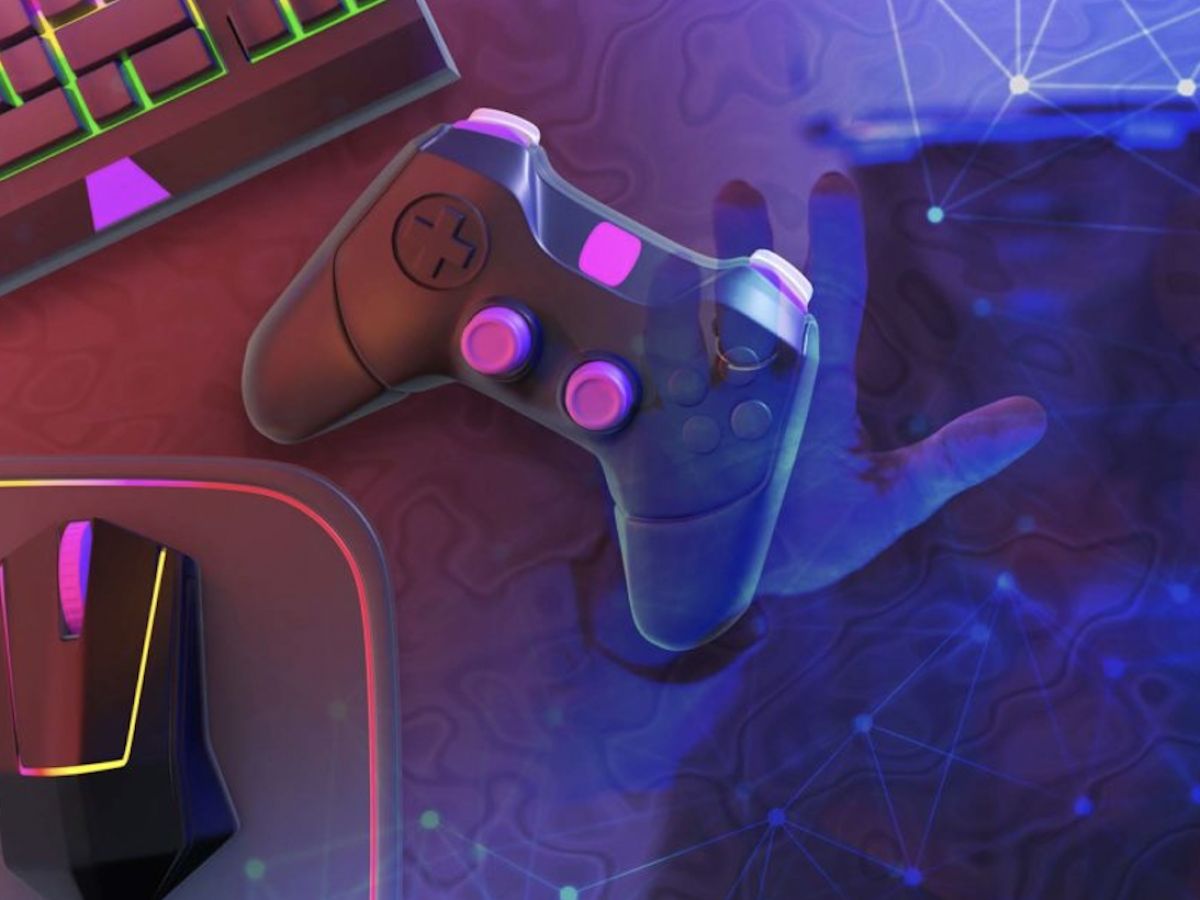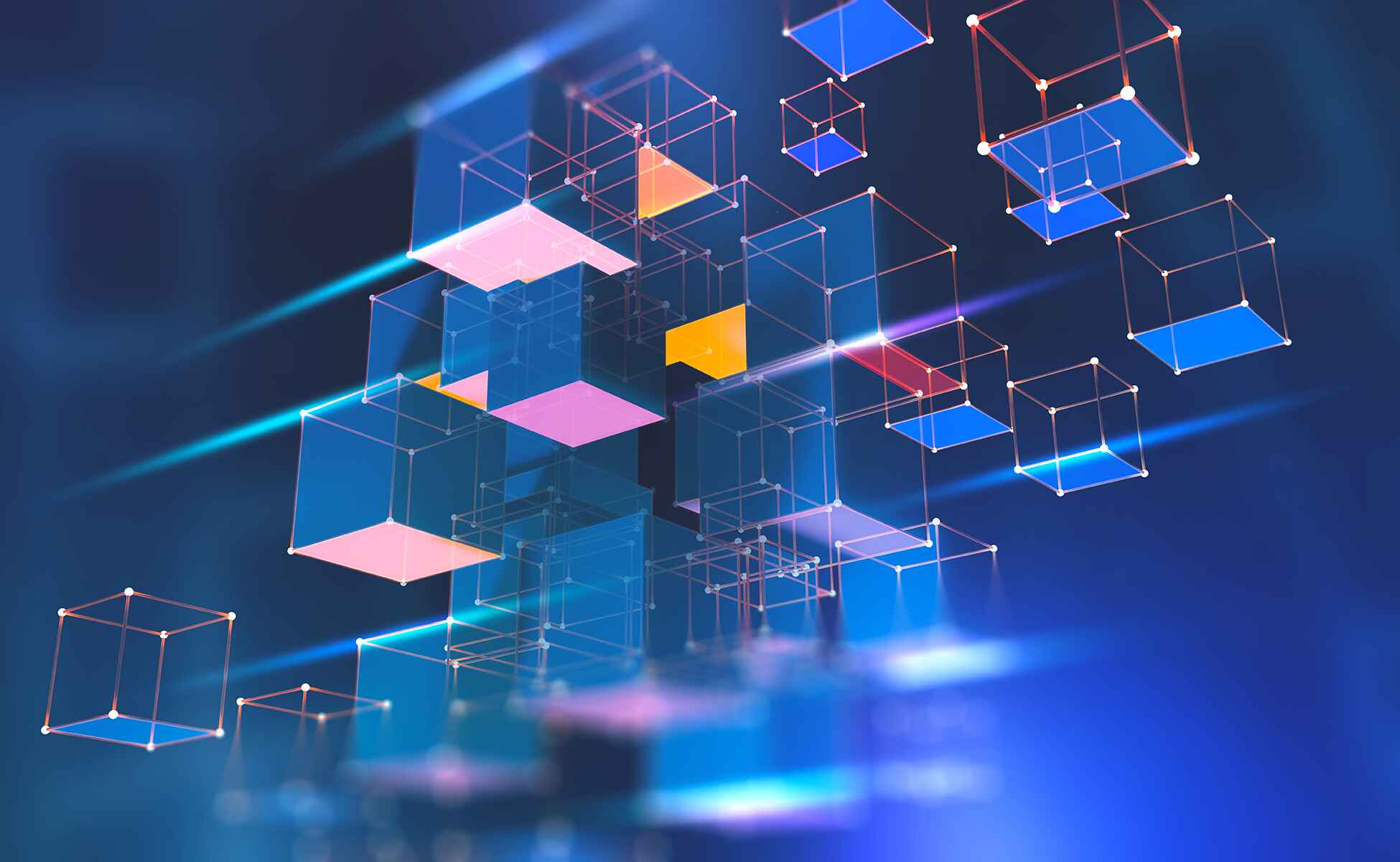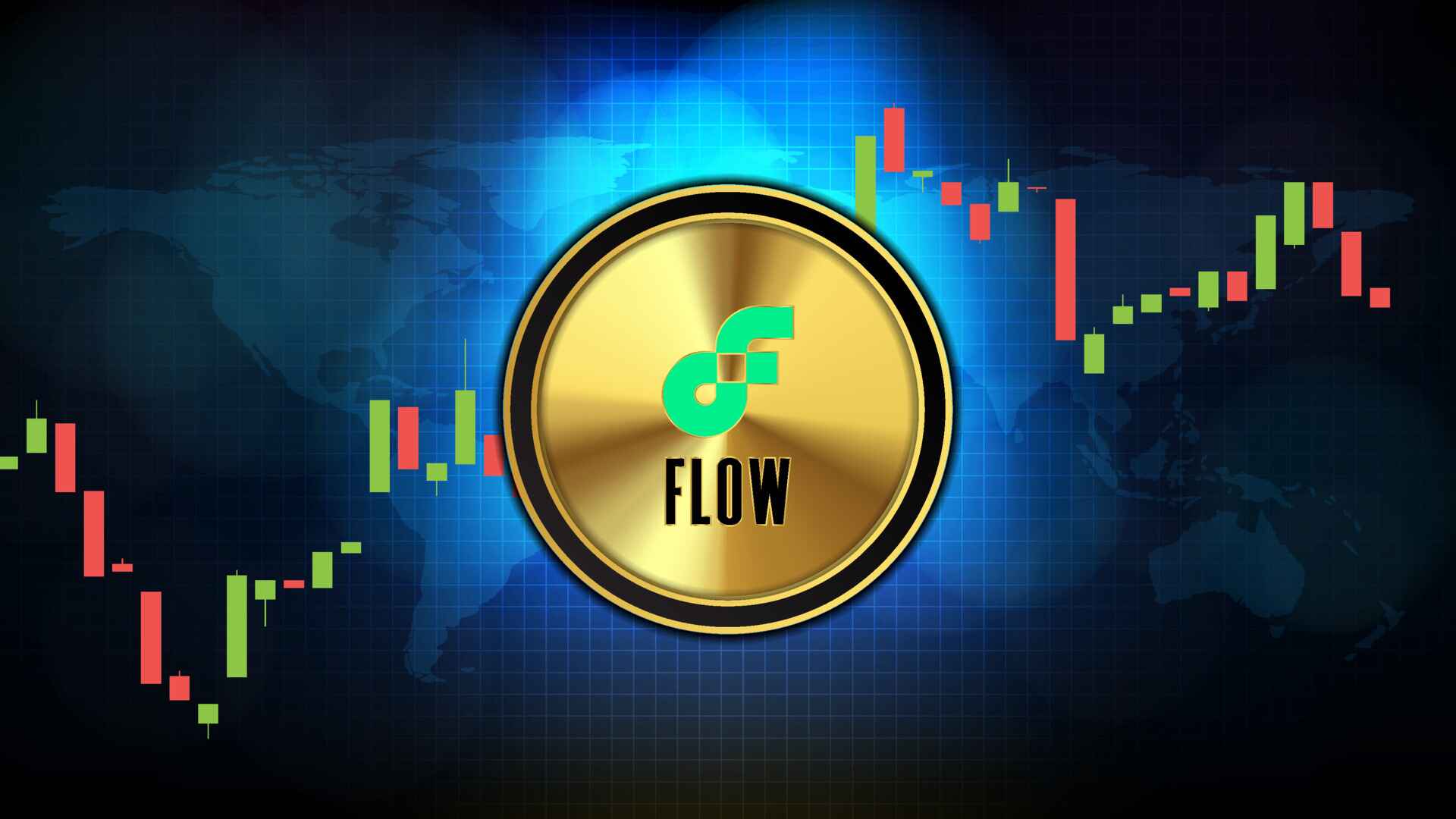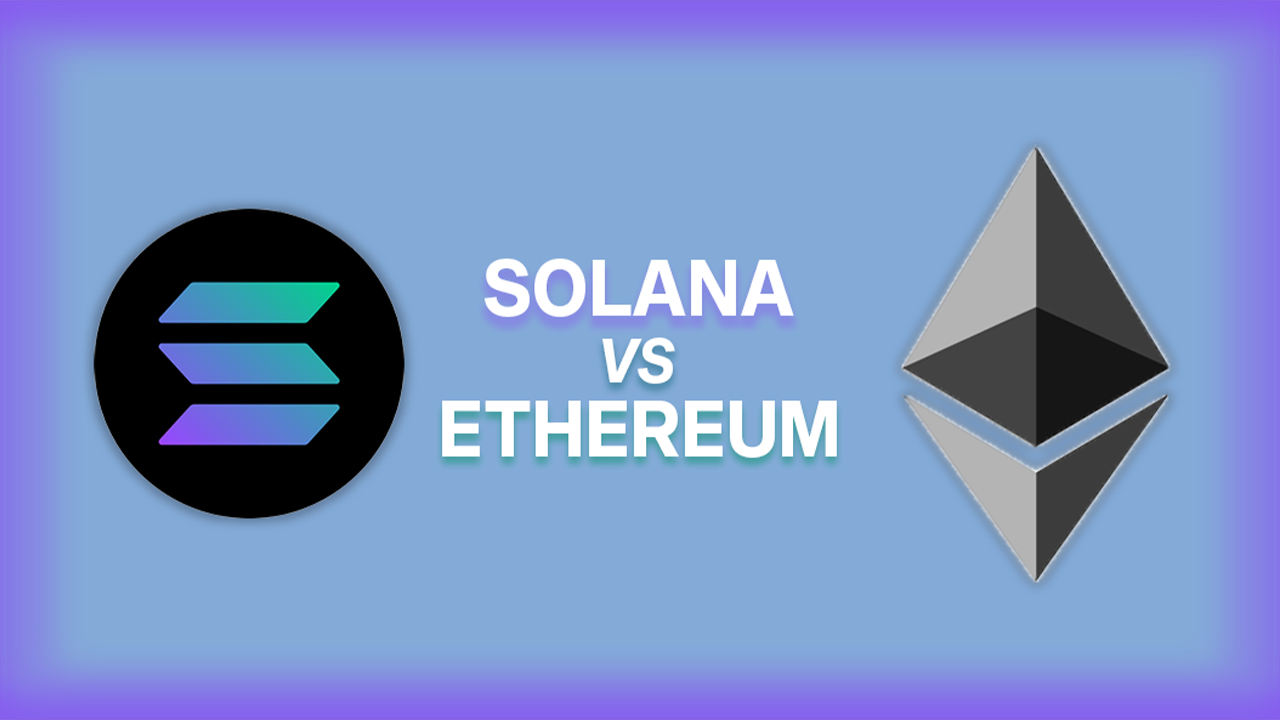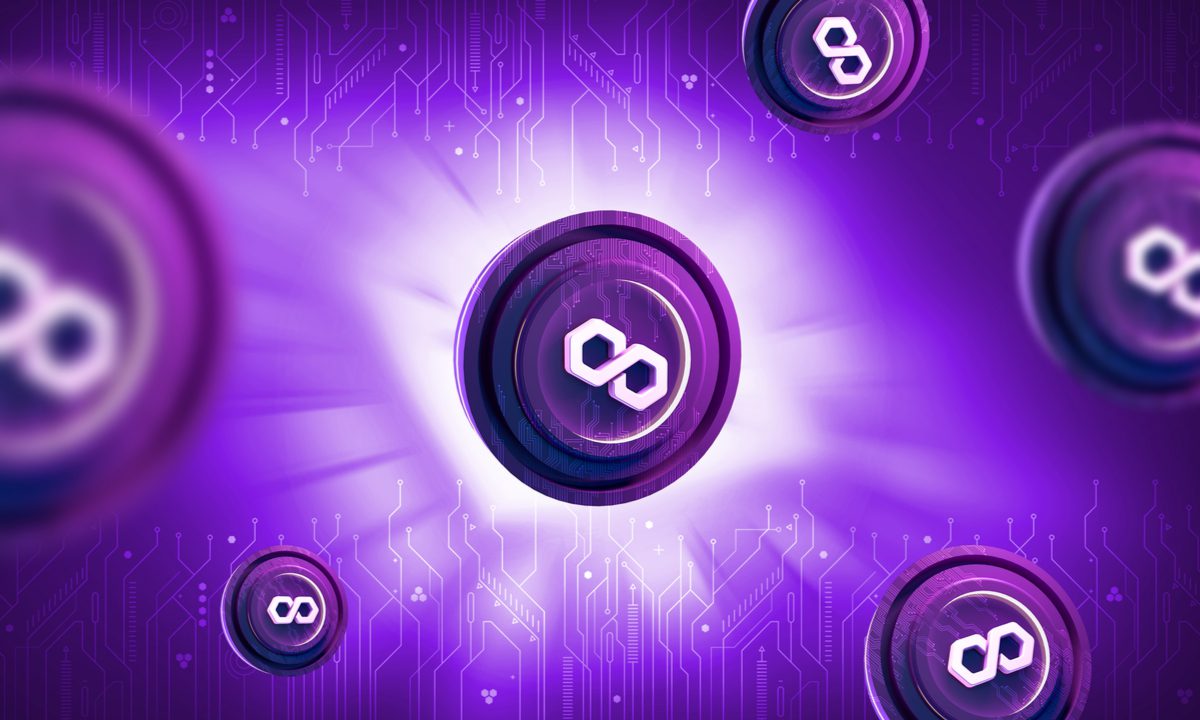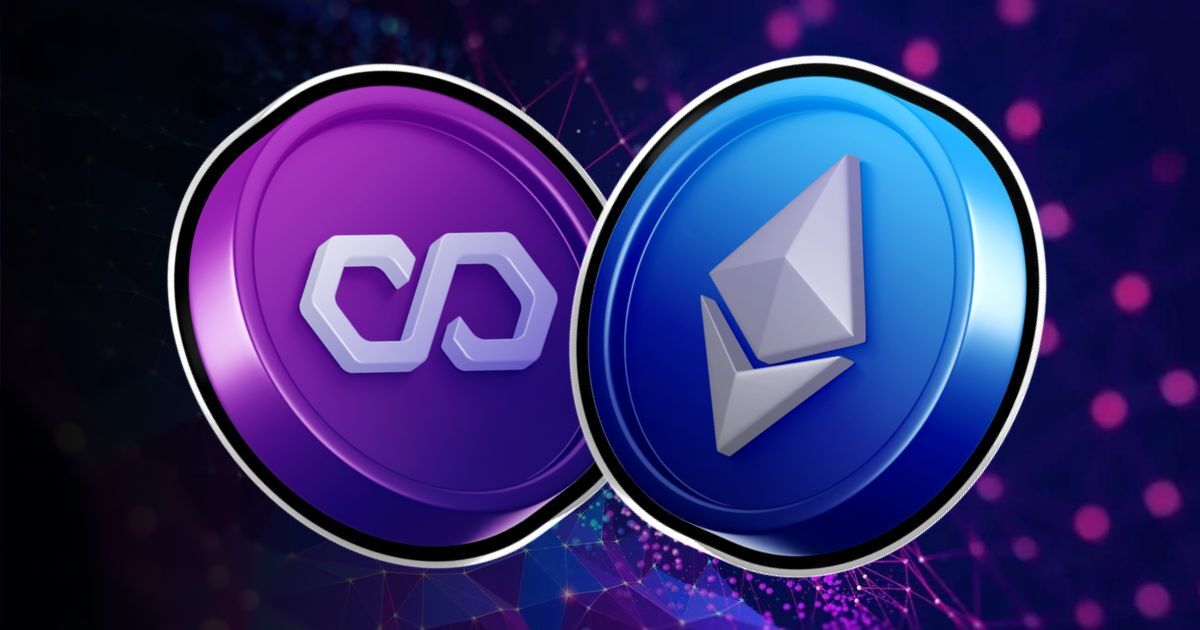Introduction
Blockchain technology has revolutionized various industries, and the gaming industry is no exception. The emergence of blockchain games has introduced a new era of decentralized, transparent, and secure gaming experiences. Today, players are not only seeking immersive gameplay but also looking for ownership and control over in-game assets. Blockchain games provide them with the opportunity to truly own and trade these digital assets, while also ensuring fairness and transparency in gameplay.
In this article, we will explore the process of building a blockchain game from scratch. Whether you are a game developer looking to venture into the world of blockchain or an entrepreneur looking to capitalize on this emerging market, understanding the basics is crucial to success. We will break down each step involved in building a blockchain game, from understanding the technology to launching and maintaining the game. So, let’s dive in!
But first, what exactly is a blockchain game? Unlike traditional games where the game logic and data are stored on centralized servers, blockchain games utilize decentralized networks, often powered by blockchain platforms such as Ethereum or TRON. These games leverage smart contracts to facilitate in-game transactions, enable asset ownership, and ensure transparency and security.
Blockchain games offer a unique gaming experience by allowing players to truly own their in-game assets. These assets, represented as digital tokens or non-fungible tokens (NFTs), can be bought, sold, and traded on blockchain-based marketplaces. This introduces a new level of player agency and opens up opportunities for players to monetize their gaming experiences.
Now that we have a basic understanding of what blockchain games are, let’s delve into the step-by-step process of building one. From choosing the right blockchain platform to designing gameplay mechanics, integrating blockchain technology, and creating a seamless user experience, we will cover all the essential aspects of building a successful blockchain game.
What is a blockchain game?
A blockchain game is a type of video game that utilizes blockchain technology to enhance gameplay, provide player ownership of in-game assets, and ensure transparency and security. Unlike traditional games where game assets and data are stored on centralized servers controlled by game developers, blockchain games are decentralized and powered by blockchain platforms such as Ethereum, TRON, or EOS.
One of the key features of blockchain games is the concept of player ownership. In these games, players have true ownership and control over their in-game assets, which are represented as digital tokens or non-fungible tokens (NFTs) on the blockchain. This means that players can buy, sell, and trade their in-game assets with other players on blockchain-based marketplaces, creating a virtual economy within the game.
Blockchain technology ensures the immutability and transparency of these in-game transactions. Every transaction is recorded on the blockchain, providing a transparent and tamper-proof ledger of ownership and transaction history. This eliminates the risk of fraud or counterfeit assets, as the authenticity of each asset can be verified on the blockchain.
Another important aspect of blockchain games is the integration of smart contracts. Smart contracts are self-executing contracts with the terms of the agreement written directly into code. In the context of blockchain games, smart contracts define the rules and mechanics of the game, facilitate in-game transactions, and ensure fairness and transparency.
For example, a blockchain game might use a smart contract to govern the distribution of rewards or the outcome of a game event. Once the conditions specified in the smart contract are met, the contract automatically executes the specified actions. This eliminates the need for a central authority to enforce the rules of the game, ensuring a level playing field for all players.
Blockchain games also offer novel gameplay experiences that leverage the unique properties of blockchain technology. Some games incorporate elements of resource management, strategic decision-making, and cooperative or competitive gameplay. Others focus on collectible card games, virtual worlds, or even gambling experiences. The possibilities are virtually limitless, and developers are continually exploring new ways to harness the potential of blockchain technology in gaming.
Understanding the basics of blockchain technology
Before diving into the process of building a blockchain game, it is crucial to grasp the fundamentals of blockchain technology. At its core, a blockchain is a decentralized and distributed ledger that records transactions across multiple computers or nodes. Instead of relying on a central authority, such as a bank or government, to validate and verify transactions, blockchain technology enables a network of participants to collectively maintain and validate the ledger.
The key features of blockchain technology that make it appealing for building games include transparency, immutability, and security. Transparency is achieved through the visibility of transactions on the blockchain. Every transaction that occurs within the game is recorded and can be traced back to its origin. This transparency ensures fairness and accountability.
Immutability refers to the fact that once a transaction is recorded on the blockchain, it cannot be altered or tampered with. This makes the blockchain an ideal tool for storing and verifying ownership of in-game assets. Players can be confident that their assets are secure and cannot be manipulated or counterfeited.
Security is a crucial aspect of blockchain technology. The decentralized nature of the blockchain, combined with cryptographic algorithms, ensures a high level of security for transactions and data. Blockchain games utilize private and public key cryptography to authenticate players and verify their ownership of assets. This cryptographic layer adds an extra level of protection against unauthorized access and fraudulent activities.
Blockchain technology also introduces the concept of consensus mechanisms to achieve agreement on the state of the blockchain. Consensus mechanisms, such as proof-of-work or proof-of-stake, are used to validate and confirm transactions. These mechanisms ensure that all participants in the network agree on the order and validity of transactions, maintaining the integrity of the blockchain.
Understanding the basics of blockchain technology is essential for building a successful blockchain game. By leveraging the transparency, immutability, and security of the blockchain, game developers can create innovative gameplay experiences and provide players with true ownership of in-game assets. The next step in the process is to choose the right blockchain platform for your game, which we will explore in the next section.
Choosing the right blockchain platform for your game
When it comes to building a blockchain game, selecting the right blockchain platform is a crucial decision. Each blockchain platform offers unique features, capabilities, and trade-offs that can significantly impact the development and success of your game. Here are some key factors to consider when choosing the right blockchain platform:
1. Scalability: Blockchain scalability refers to the network’s ability to handle a large number of transactions. Games with high transaction volumes require a blockchain platform that can handle the load without slowing down or becoming congested. Look for blockchain platforms that have implemented solutions to improve scalability, such as layer-2 solutions or sharding.
2. Smart contract functionality: Smart contracts are at the core of blockchain games. They define the game rules, mechanics, and facilitate in-game transactions. Ensure that the blockchain platform you choose supports the programming language and features necessary for your desired smart contract functionality.
3. Community and ecosystem: The strength and support of the community and ecosystem surrounding a blockchain platform can greatly impact the success of your game. Look for platforms with an active developer community, comprehensive documentation, and a vibrant marketplace for in-game assets.
4. Interoperability: Interoperability refers to the ability of your game to interact with other blockchain-based applications or platforms. If you plan to integrate your game with other decentralized applications (dApps) or utilize cross-chain interactions, choose a platform that supports interoperability standards such as ERC-20 or ERC-721 tokens.
5. Cost and transaction fees: Consider the cost of deploying your game on the chosen blockchain platform. Some platforms may have higher transaction fees or gas costs, which can impact the profitability and user experience of your game. Evaluate the economic model of the blockchain platform and ensure it aligns with your game’s requirements.
6. Security and governance: Security is of paramount importance when dealing with digital assets and player data. Look for blockchain platforms with a strong track record of security and protocols in place to prevent hacks or vulnerabilities. Additionally, consider the governance model of the platform and how decisions about upgrades or changes to the network are made.
By carefully considering these factors, you can choose the blockchain platform that best suits your game’s requirements and goals. Remember, each platform has its own strengths and weaknesses, so it’s essential to conduct thorough research and potentially consult with blockchain experts before making your decision. The next step is to design the game concept and gameplay mechanics, which we will explore in the following section.
Designing the game concept and gameplay mechanics
Designing the game concept and gameplay mechanics is a crucial step in the process of building a successful blockchain game. The concept and mechanics of your game will determine its appeal to players and play a significant role in attracting and retaining a user base. Here are some essential aspects to consider during this stage:
1. Unique selling proposition: Identify what makes your game unique and sets it apart from others in the market. Blockchain technology opens up a plethora of possibilities, so think about how you can leverage it to offer a distinct and compelling gaming experience. This could include elements such as player ownership of assets, decentralized gameplay, or innovative token mechanics.
2. Game economy: Constructing a robust and balanced in-game economy is crucial for the success of your blockchain game. Determine how your in-game assets will be acquired, traded, and used within the game. Consider factors such as scarcity, utility, and longevity of assets to create a compelling value proposition for players.
3. Gameplay mechanics: Define the core gameplay mechanics that will drive player engagement and enjoyment. Whether it’s strategic decision-making, resource management, competitive battles, or cooperative quests, ensure that the gameplay mechanics are engaging, intuitive, and aligned with your target audience’s preferences.
4. Progression and rewards: Consider how players will progress and be rewarded in your game. Determine the milestones, achievements, and unlockable content that will keep players motivated and invested in the long term. Balance the rate of progression and rewards to maintain a sense of challenge and accomplishment for players.
5. Social and multiplayer aspects: Think about how social interactions and multiplayer features can enhance the gaming experience. Encourage player interaction, such as trading, collaborating, or competing with others. Implement features like leaderboards, guilds, or player-driven events to foster a sense of community and competition.
6. Mobile or desktop: Consider whether your game will be designed for mobile devices, desktop computers, or both. Evaluate the user experience on different platforms and optimize the game accordingly. Mobile-friendly interfaces and mechanics that suit shorter play sessions can cater to the growing mobile gaming market.
Throughout the design process, it’s crucial to gather feedback from potential players or beta testers. Conduct market research, engage with your target audience, and iterate on your game concept and mechanics based on their feedback. This will help ensure that your game resonates with players and meets their expectations.
Once the game concept and gameplay mechanics are solidified, the next step is to start building the smart contracts that will underpin your game. We will explore this in the next section.
Building the smart contracts for your game
Smart contracts play a pivotal role in blockchain games as they govern the rules, mechanics, and transactions within the game. Building robust and secure smart contracts is a critical step in the development process. Here are the key considerations when building smart contracts for your blockchain game:
1. Define the game logic: Start by defining the rules and mechanics of your game. Consider aspects such as asset ownership, in-game transactions, game events, rewards, and player interactions. Translate these game mechanics into code, ensuring that the smart contract accurately reflects the intended gameplay experience.
2. Choose a programming language and framework: Select a programming language and framework that is compatible with your chosen blockchain platform. Common options include Solidity for Ethereum, C++ for EOS, or Solidity/Truffle for TRON. Familiarize yourself with the syntax and best practices of the chosen programming language to develop efficient and secure smart contracts.
3. Implement security measures: Security is paramount when building smart contracts. Follow security best practices, such as input validation, safe math operations, and protection against reentrancy attacks. Audit and test your smart contracts thoroughly to identify vulnerabilities and ensure the safety of user funds and assets.
4. Consider scalability and gas optimization: Design your smart contracts with scalability and gas optimization in mind. Gas is the unit used to measure the computational cost of executing transactions on the blockchain. Optimize your contract code to minimize gas usage, ensuring that the game remains cost-effective for players.
5. Integrate token functionalities: If your game involves the use of tokens or non-fungible tokens (NFTs), incorporate token functionalities into your smart contracts. This includes token creation, transfer, and ownership validation. Leverage existing token standards such as ERC-20 or ERC-721, or create custom token contracts to align with your game’s specific requirements.
6. Plan for upgradability: Consider incorporating upgradability features into your smart contracts to allow for future improvements or bug fixes. This can be achieved through mechanisms such as proxy contracts or upgradeable libraries. Proper planning for upgradability ensures that your game can evolve with new features and enhancements without disrupting the gameplay or user experience.
Throughout the development process, rigorous testing and auditing of your smart contracts are essential. Conduct both functional and security testing to identify any issues or vulnerabilities. Engage with the developer community and seek external audits to gain additional insights and ensure the reliability and robustness of your smart contracts.
Once the smart contracts are built, the next step is to integrate blockchain technology into the game infrastructure. We will explore this aspect in the upcoming section.
Integrating blockchain into the game infrastructure
Integrating blockchain technology into the game infrastructure is a pivotal step in building a blockchain game. This involves connecting the game client, server, and blockchain network to create a seamless and secure gaming experience. Here are the key considerations when integrating blockchain into your game infrastructure:
1. Wallet integration: Incorporate a cryptocurrency wallet system into your game to enable players to securely manage their in-game assets. This includes functionalities like creating and importing wallets, generating addresses, and signing transactions. Utilize libraries or APIs provided by the chosen blockchain platform to simplify wallet integration.
2. Asset ownership verification: Implement mechanisms to verify the ownership and authenticity of in-game assets stored on the blockchain. When displaying player assets, retrieve and verify the token ownership data from the blockchain to ensure accurate and tamper-proof representation of assets within the game.
3. In-game transactions: Enable seamless in-game transactions by interacting with the blockchain network through smart contracts. Implement functionalities that allow players to buy, sell, trade, or upgrade their in-game assets securely and transparently. Handle transaction fees and gas costs appropriately to ensure a smooth user experience.
4. Event handling: Utilize blockchain events to trigger in-game actions or notify players of important updates. Smart contracts emit events when specific conditions are met or transactions are executed. Listen to these events and react accordingly within the game client or server to provide real-time feedback and updates to players.
5. Blockchain data synchronization: Regularly synchronize game data with the blockchain to keep track of changes in asset ownership, balances, and other relevant information. Use blockchain APIs or indexing services to efficiently query and retrieve blockchain data, ensuring accurate and up-to-date information in the game.
6. Security considerations: Implement robust security measures to protect player data, wallet information, and in-game transactions. Utilize encryption techniques, secure communication protocols, and authentication mechanisms to safeguard sensitive information. Keep security patches and updates up to date to mitigate potential vulnerabilities.
7. UI/UX integration: Design your game’s user interface (UI) and user experience (UX) to seamlessly incorporate blockchain features. Provide clear and intuitive interfaces for managing wallets, executing transactions, and interacting with in-game blockchain functionalities. Strive for a user-friendly experience that balances blockchain complexity with ease of use.
Proper integration of blockchain into your game infrastructure is essential for delivering a seamless and secure gaming experience to players. Continuously test and optimize the integration to ensure smooth gameplay and minimize any potential disruptions. As the infrastructure comes together, the next step is to focus on developing the user interface and user experience, which we will explore in the following section.
Developing the user interface and user experience
Developing an intuitive and engaging user interface (UI) and user experience (UX) is crucial for the success of your blockchain game. The UI/UX design should seamlessly blend the blockchain features with the game mechanics, ensuring an enjoyable and immersive experience for players. Here are the key considerations when developing the user interface and user experience:
1. Consistent design and branding: Create a consistent visual design and branding that aligns with the overall theme and tone of your game. Use appealing graphics, color schemes, and typography to create a visually appealing interface that resonates with your target audience.
2. Intuitive navigation: Design an intuitive navigation system that allows players to easily explore different game features and functionalities. Use clear labels, hierarchical menus, and intuitive icons to guide players through the game interface and minimize confusion.
3. Onboarding and tutorials: Provide a seamless onboarding experience for new players, introducing them to the game mechanics, blockchain features, and any unique aspects of the gameplay. Incorporate interactive tutorials, tooltips, and in-game guides to help players understand the interface and mechanics step by step.
4. Clear asset management: Display the player’s in-game assets and their corresponding blockchain data in a clear and organized manner. Provide relevant information, such as asset names, descriptions, ownership, and current values. Enable players to easily manage their assets, including buying, selling, and trading within the game.
5. Transaction feedback and notifications: Provide real-time feedback and notifications to players regarding their in-game transactions and blockchain interactions. Inform them of successful transactions, failed transactions, or pending transactions. Use visual cues, notifications, and progress indicators to keep players informed and engaged.
6. Responsive design: Ensure that your user interface is responsive and adaptable to different screen sizes and devices. Optimize the interface for both desktop and mobile platforms, considering varying screen resolutions, touch interactions, and user behaviors.
7. Feedback and player interaction: Incorporate interactive elements that allow players to provide feedback, report issues, or suggest improvements. Encourage player engagement through features such as chat systems, forums, or social media integration. Actively listen to player feedback and iterate on the UI/UX design based on their needs and preferences.
8. Testing and iteration: Continuously test and iterate on the user interface and user experience to identify areas for improvement. Conduct user testing with real players to gather feedback and insights on the usability and effectiveness of the UI/UX design. Use analytics and user feedback to make data-driven decisions and refine the interface accordingly.
Developing a cohesive and user-friendly UI/UX design is vital for ensuring a positive player experience and driving engagement in your blockchain game. By combining intuitive navigation, clear asset management, and responsive design, you can create an interface that seamlessly integrates blockchain features with the gameplay mechanics, providing players with an immersive and enjoyable gaming experience.
The next step in the process is to implement secure player authentication and data storage, which we will explore in the following section.
Implementing secure player authentication and data storage
Implementing secure player authentication and data storage is of utmost importance in any blockchain game. As players interact with the game and engage in transactions, it is crucial to ensure the security and privacy of their data. Here are the key considerations when implementing secure player authentication and data storage:
1. User authentication: Set up a robust authentication system to verify and authenticate players’ identities. Utilize secure login methods, such as username/password combinations or, preferably, two-factor authentication (2FA). Consider integrating third-party authentication providers to streamline the authentication process while maintaining security.
2. Encryption: Encrypt sensitive player data, such as passwords and private keys, during storage and transmission. Utilize industry-standard encryption algorithms to protect information from unauthorized access and ensure data privacy.
3. Token-based authentication: Consider implementing token-based authentication for improved security and convenience. Generate and issue access tokens to authenticated players, which can be used for subsequent API calls or interactions with the blockchain. Tokens can have an expiration time and are securely stored on the player’s device.
4. Secure data storage: Ensure that player data, such as in-game progress, assets, and transaction history, is securely stored. Utilize secure databases and encryption techniques to protect sensitive information. Consider decentralized storage options using blockchain-based solutions, such as IPFS (InterPlanetary File System) or other distributed storage systems.
5. Data privacy: Clearly communicate to players how their data will be stored, used, and shared. Provide clear and transparent privacy policies that adhere to relevant data protection regulations. Obtain explicit consent from players regarding data collection and give them control over their data preferences.
6. Regular backups and redundancy: Establish a backup strategy to ensure data resilience and availability. Regularly back up player data to prevent data loss in the event of a system failure or cyberattack. Consider implementing redundancy measures to ensure uninterrupted access to player data.
7. Compliance with regulations: Be aware of and comply with applicable data protection regulations, such as GDPR (General Data Protection Regulation) or other regional privacy laws. Ensure that your data storage and handling practices align with these regulations to protect player privacy and avoid legal issues.
8. Ongoing security measures: Regularly assess and update your security measures to stay ahead of potential threats or vulnerabilities. Conduct regular security audits and penetration testing to identify and address any security weaknesses. Stay up to date with security best practices and implement security patches and updates promptly.
By implementing secure player authentication and data storage solutions, you can protect player identities, safeguard player data, and provide a secure environment for players to engage with your blockchain game. Prioritize data privacy and security throughout the design and development process to build trust with your players and establish a solid foundation for long-term success.
Next, we will delve into the crucial step of testing and debugging your blockchain game.
Testing and debugging the blockchain game
Testing and debugging are critical steps in the development process of a blockchain game. Thorough testing helps ensure that the game functions as intended, provides a seamless and enjoyable experience for players, and safeguards against potential vulnerabilities or bugs. Here are the key considerations when testing and debugging your blockchain game:
1. Functional testing: Perform rigorous functional testing to verify that all game features, interactions, and transactions work correctly. Test various scenarios and edge cases to ensure that the game can handle different player actions and inputs. This includes testing different gameplay paths, in-game transactions, asset ownership transfers, and any unique functionalities specific to your game.
2. Integration testing: Test the integration between different components of your game, such as the client, server, blockchain network, and external APIs. This ensures that these components work seamlessly together and that data is correctly synced between the game and the blockchain. Test interactions with wallets, smart contracts, and blockchain events to verify that the game is properly connected to the blockchain network.
3. Load testing: Simulate high loads and stress test your game to evaluate its performance and scalability. Test the game under peak usage conditions to ensure it can handle a large number of players and transactions without performance degradation or system failures. Identify and address any performance bottlenecks or limitations.
4. Security testing: Conduct thorough security testing to identify and address potential vulnerabilities or weaknesses. Test for common security issues, such as input validation vulnerabilities, authorization bypass, and unauthorized access to sensitive data. Perform penetration testing to assess the game’s resilience against hacking attempts. Implement security best practices and seek third-party security audits to ensure the integrity and security of your game.
5. Debugging: Use a combination of logging, debugging tools, and error tracking to identify and fix any issues or bugs encountered during testing. Implement proper error handling and provide user-friendly error messages to assist players in resolving potential issues. Continuously monitor and analyze game metrics, user feedback, and crash reports to identify and address any lingering bugs or crashes.
6. User testing: Engage with real players or beta testers to gather feedback on the gameplay experience. Conduct user testing sessions to observe how players interact with the game and collect insights on usability, enjoyment, and any areas that need improvement. Incorporate player feedback into your debugging and refinement process to enhance the overall game experience.
7. Iteration and refinement: Continuously iterate and refine your game based on the testing and debugging results. Regularly release updates and patches to address any identified issues or implement enhancements. Strive for ongoing improvement and listen to player feedback to create a compelling and polished game.
Thoroughly testing and debugging your blockchain game is crucial to ensure a high-quality, secure, and enjoyable gaming experience for players. By addressing any issues, optimizing performance, and refining gameplay based on testing results, you can enhance the overall player experience and increase the success of your blockchain game.
The final section will delve into the important aspects of launching, marketing, and maintaining your blockchain game.
Launching, marketing, and maintaining the game
Launching, marketing, and maintaining your blockchain game are crucial aspects of ensuring its success and longevity in the competitive gaming market. Here are the key considerations when it comes to launching, marketing, and maintaining your game:
1. Pre-launch preparations: Before launching your game, build anticipation and generate buzz through various pre-launch activities. Create a dedicated website or landing page to showcase your game and collect email addresses for future updates. Engage with the gaming community on social media platforms and forums to create awareness and excitement about your game.
2. Release strategy: Plan a well-executed release strategy. Consider launching your game on multiple platforms or app stores to reach a wider audience. Leverage the appropriate distribution channels and consider partnering with influential gaming influencers or streamers to gain exposure to their audiences.
3. Marketing and promotion: Develop a comprehensive marketing strategy to attract players to your game. Utilize various marketing channels such as social media, content marketing, paid advertising, and influencer collaborations to create awareness and drive downloads. Highlight the unique features of your blockchain game, such as player ownership, transparency, or innovative gameplay mechanics, to differentiate it from traditional games.
4. Community building: Engage with your player community and foster a sense of belonging and loyalty. Encourage players to provide feedback, participate in discussions, and share their experiences. Regularly communicate updates, events, and new features to keep players informed and engaged. Consider hosting contests, giveaways, or events to reward and incentivize player participation.
5. Player support: Provide reliable and responsive player support to address any inquiries, issues, or feedback. Offer multiple channels for player support, such as help desk systems, email support, or live chat. Actively listen to player feedback and implement improvements or fixes based on their input, demonstrating that you value and prioritize their gaming experience.
6. Post-launch updates and content: Continuously release updates, patches, and new content to keep the game fresh and engaging. Respond to player feedback and incorporate new features, mechanics, or in-game events based on their preferences. Regularly communicate with the player community to inform them about upcoming updates or events, keeping them excited and invested in your game.
7. Data analysis and optimization: Utilize analytics tools to collect and analyze player data, behavior, and in-game metrics. Gain insights into player engagement, retention rates, or monetization patterns. Use this data to optimize gameplay, balance the in-game economy, and make informed decisions regarding future updates and content additions.
8. Monetization strategies: Implement a monetization strategy that aligns with your game and target audience. Consider in-app purchases, cosmetic items, or additional content to generate revenue. Ensure that any monetization features are fair and transparent to maintain player trust and satisfaction. Experiment with different monetization models and pricing strategies to find the optimal balance between player enjoyment and revenue generation.
9. Regular maintenance and support: Allocate resources for ongoing maintenance, bug fixes, and updates to address any issues or vulnerabilities. Stay proactive in monitoring the game’s performance, addressing technical issues promptly, and providing regular updates to ensure a smooth and reliable gaming experience. Continuously interact with the player community, listen to feedback, and actively support them throughout their gaming journey.
Launching, marketing, and maintaining a blockchain game requires careful planning, effective marketing strategies, and ongoing support. By building a strong player community, providing excellent support, and continuously adding value through updates and engaging content, you can foster a thriving and successful blockchain game that resonates with players and stands the test of time.
Conclusion
Building a blockchain game offers a unique opportunity to create immersive gameplay experiences while leveraging the transparency, security, and ownership enabled by blockchain technology. By following the step-by-step process outlined in this article, you can embark on a journey to bring your blockchain game to life.
We started by understanding the basics of blockchain technology and its application in gaming. Blockchain games empower players with true asset ownership, transparent transactions, and smart contract-driven gameplay mechanics. Then, we explored the importance of choosing the right blockchain platform for your game, considering factors such as scalability, smart contract functionality, and community support.
Next, we delved into designing the game concept and gameplay mechanics, focusing on creating unique selling propositions, defining the game economy, and incorporating engaging gameplay mechanics that resonate with players. We then shifted our attention to building robust and secure smart contracts that govern the game rules, transactions, and interactions on the blockchain.
Integrating blockchain technology into the game infrastructure requires seamless wallet integration, asset ownership verification, and smooth transaction handling. With secure player authentication and data storage, players’ identities and sensitive information are protected, ensuring a safe and trustworthy gaming environment.
Testing and debugging are crucial steps in the development process, allowing you to identify and resolve any issues, refine gameplay mechanics, and enhance overall player experience. Launching, marketing, and maintaining your blockchain game are essential for gaining traction, growing a player community, and sustaining long-term success.
By continuously engaging with the player community, providing regular updates, and optimizing the game based on player feedback and data analysis, you can create a thriving and captivating blockchain game that stands out in the competitive gaming market.
Embark on your journey with passion, creativity, and a commitment to delivering the best possible gaming experience. Remember, the blockchain gaming landscape is ever-evolving, and staying updated with technological advancements and player preferences is key to your game’s success.
Now it’s time to unleash your creativity, dive into the world of blockchain game development, and build an exciting and immersive game that captivates players and pushes the boundaries of the gaming industry.







